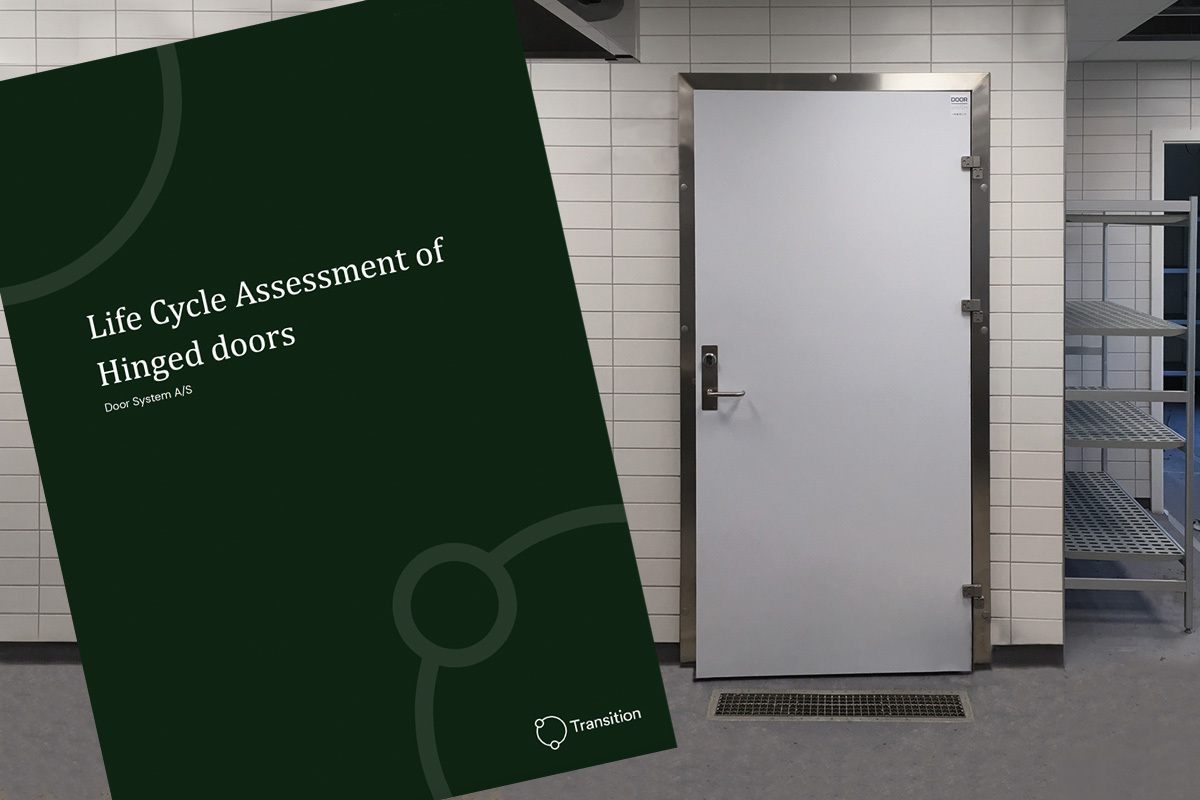
"It is important to us that we have the documentation in place," says Brita Rosenbech, technical manager at Door System.
LCA reports for our hinged doors and roller doors
At Door System, we are aware of the responsibility we bear towards the climate as a result of the environmental impacts caused by our products and the production of our doors. We work purposefully to map our CO2 emissions and to document the company’s environmental impacts.
Most recently, we have had LCA reports prepared for our hinged doors and our roller doors, see below.
At the same time, we are in the process of preparing a new climate account, which we expect to be completed in the spring of 2026.
The LCA reports and the climate account are prepared in cooperation with the consultancy firm Transition, who acts as our advisor on these matters.

LCA report for our hinged doors
The LCA report assesses the climate impact of 1 m2 of door for both single-leaf and double-leaf hinged doors. The climate impact of the doors is directly linked to their relatively high weight per m2 and the materials used. Material consumption is by far the largest contributor to the doors’ climate impact, particularly the use of steel, but also the use of PIR foam. Waste management is the second-largest contributor, although significantly smaller than raw materials.
The results of the life cycle analysis of the hinged doors’ climate impact can be used in connection with the LCA calculation of a building, as prescribed in the Danish Building Regulations.
The life cycle analysis of the hinged doors has been prepared in accordance with DS/EN15804+A2:2019 and meets the requirements of the Danish Building Regulations regarding calculation methodology and module content.
In addition, we have developed a calculation tool that enables us to estimate emissions expressed in kg CO2 equivalents for specific hinged doors.
If you require further information, please feel free to contact us.

LCA report for our roller doors
The LCA report assesses the climate impact of 1 m2 of a roller door. The climate impact of the roller doors is directly linked to their material consumption. Steel is the primary contributor, but electrical components also make a significant contribution to the climate impact. Waste management has only a minor impact, mainly due to the high level of recycling.
The results of the life cycle analysis of the roller doors’ climate impact can be used in connection with the LCA calculation of a building, as prescribed in the Danish Building Regulations.
The life cycle analysis of the roller doors has been prepared in accordance with DS/EN15804+A2:2019 and meets the requirements of the Danish Building Regulations regarding calculation methodology and module content.
In addition, we have developed a calculation tool that enables us to estimate emissions expressed in kg CO2 equivalents for specific roller doors.
If you require further information, please feel free to contact us.

The LCA reports has been co-funded by the EU
We have a member of staff at Door System dedicated to identifying and documenting our environmental impact.
We also collaborate with external consultants who assist us in providing analyses and correct documentation, for example, through their calculation models.
The preparation of the LCA reports is carried out with support from the EU.

